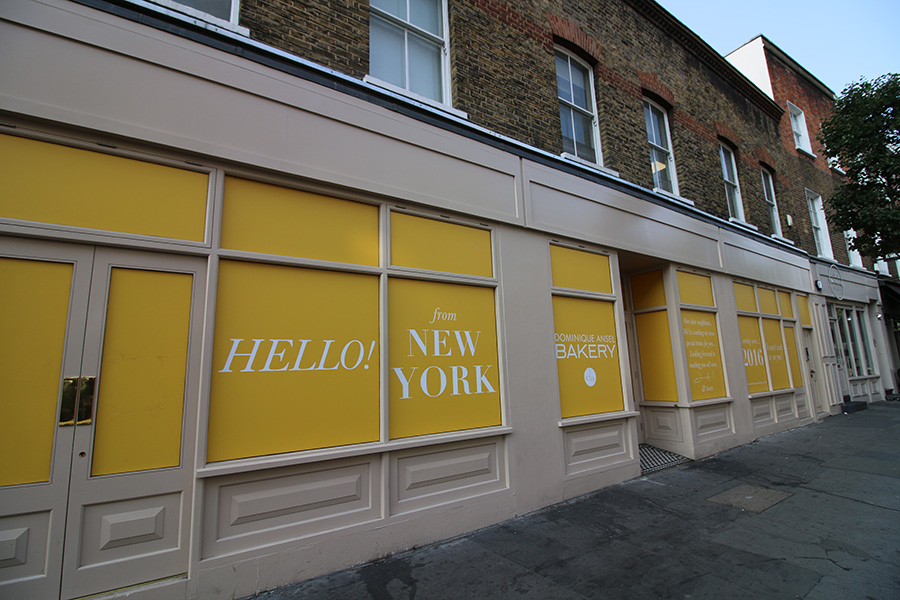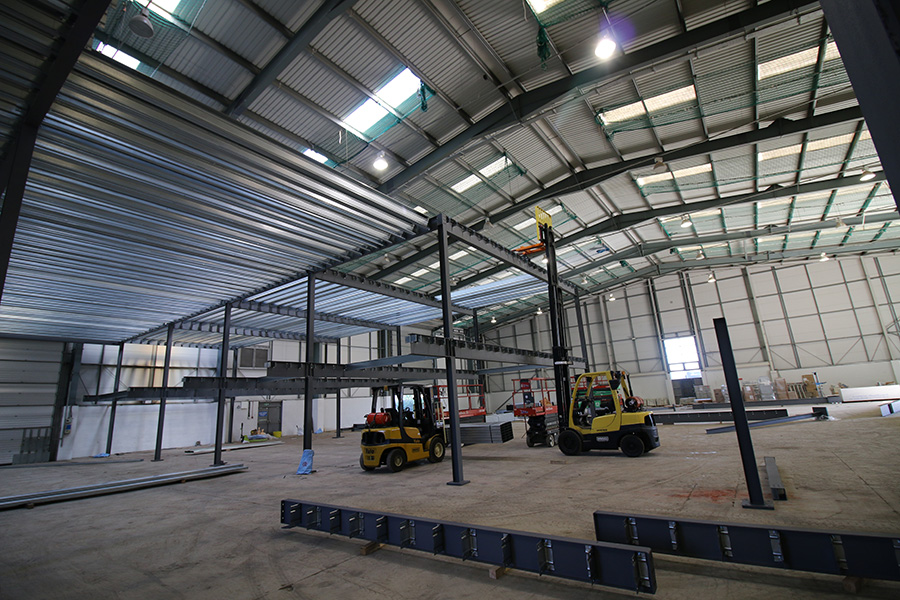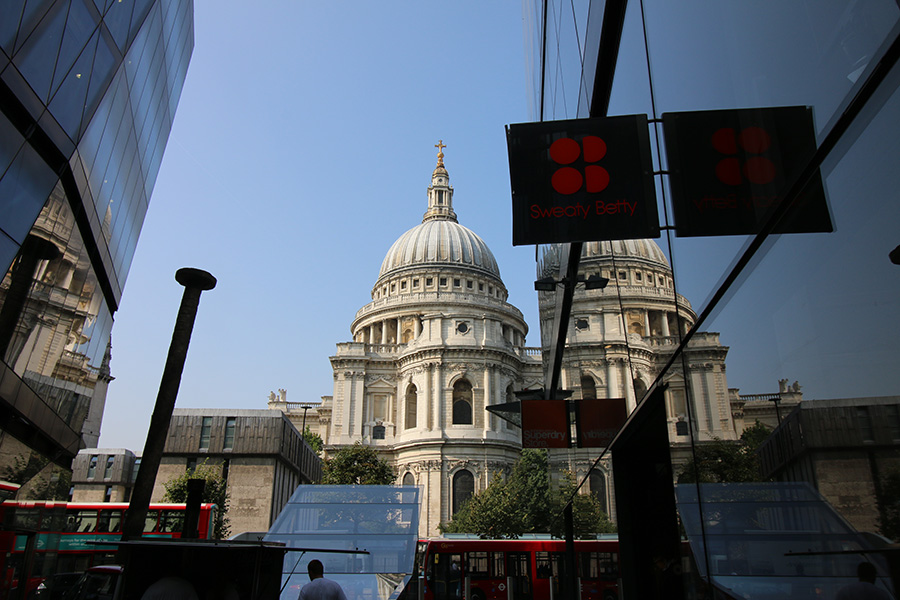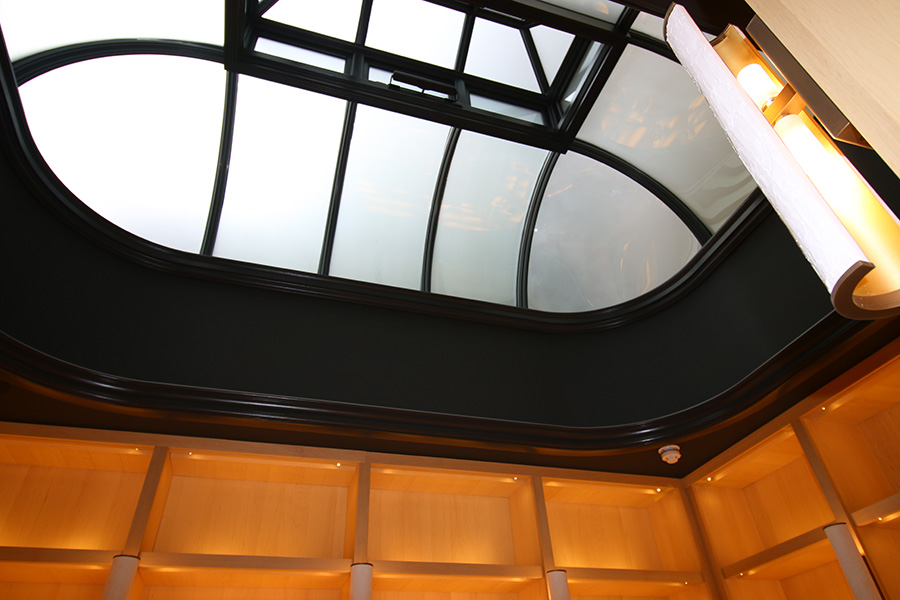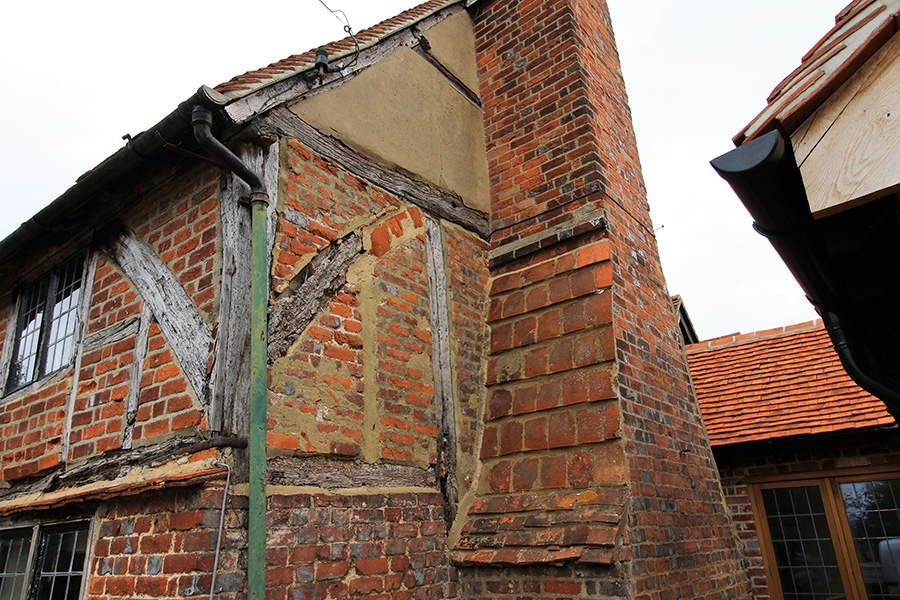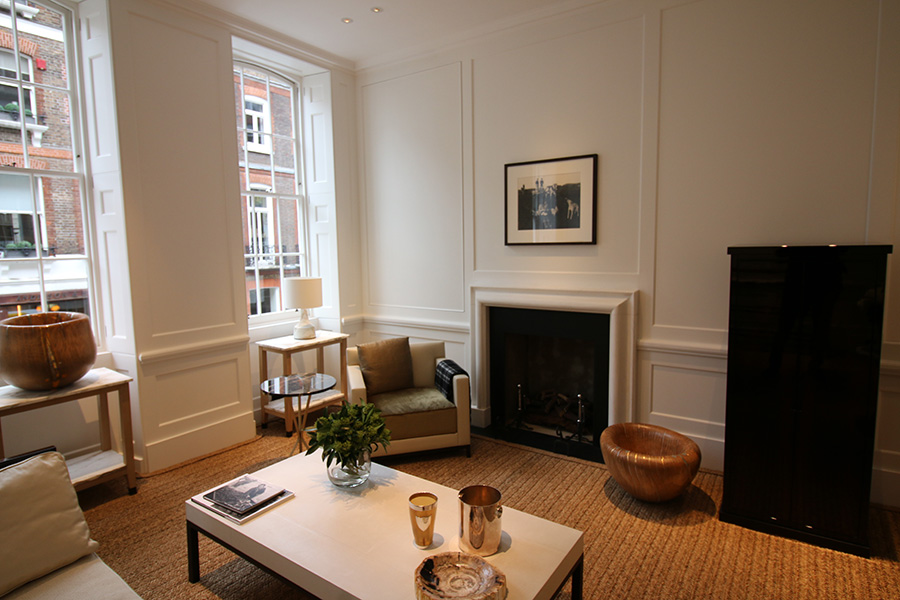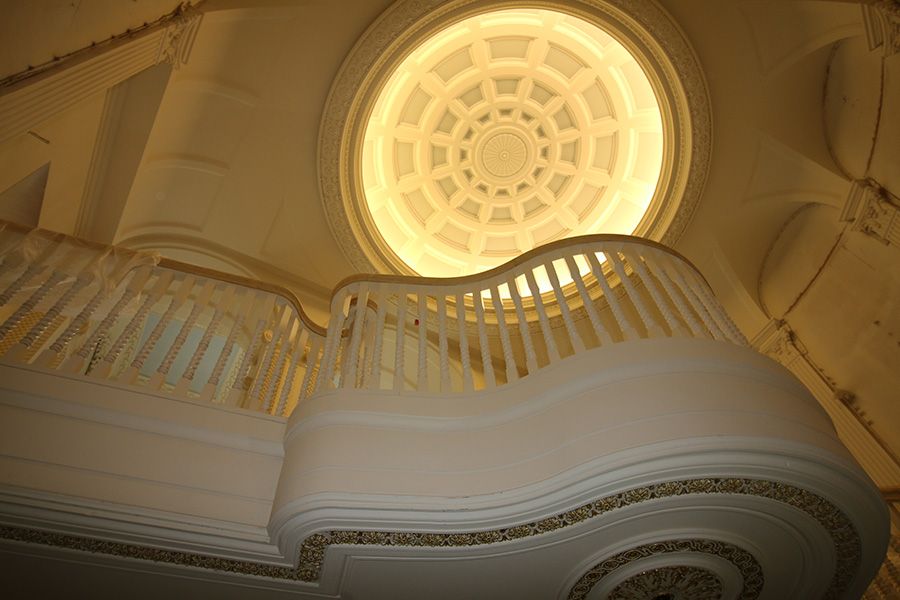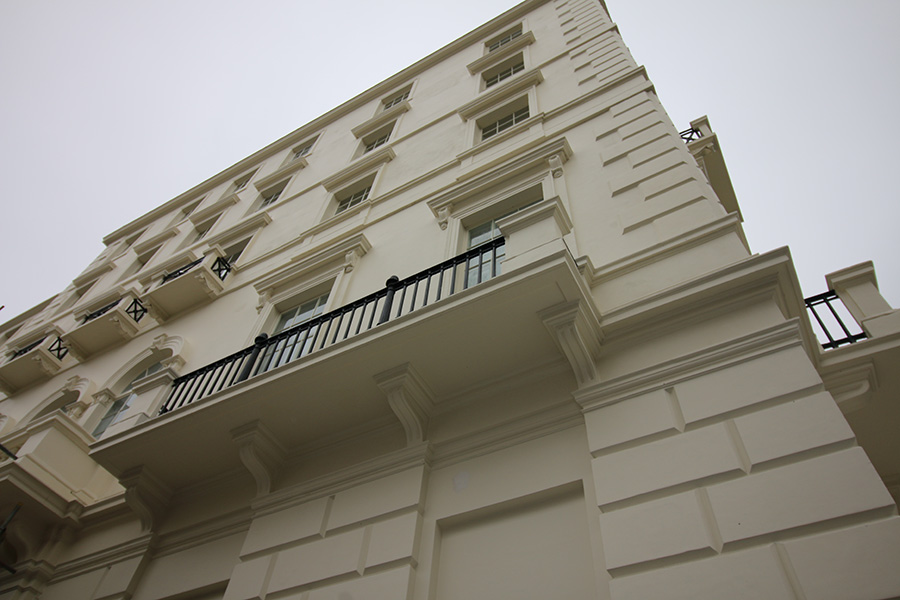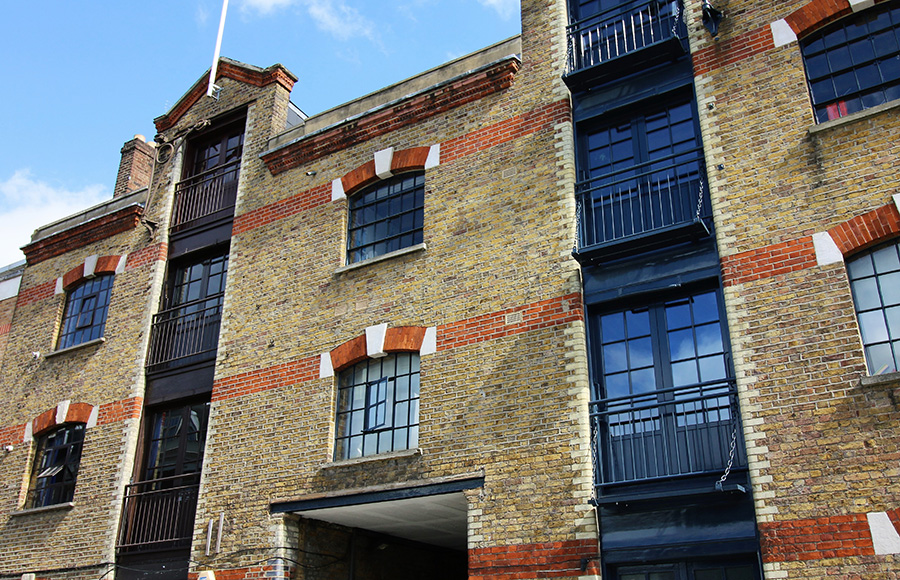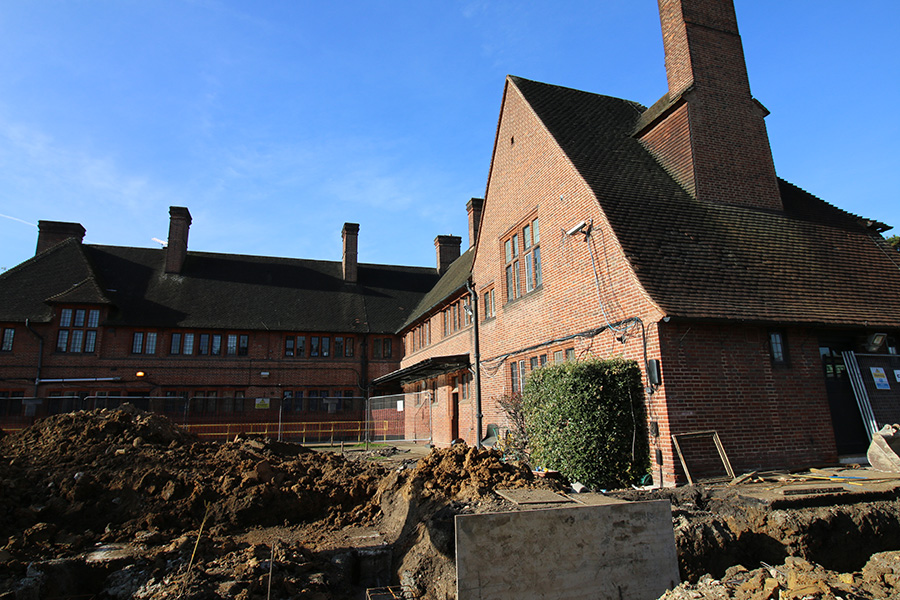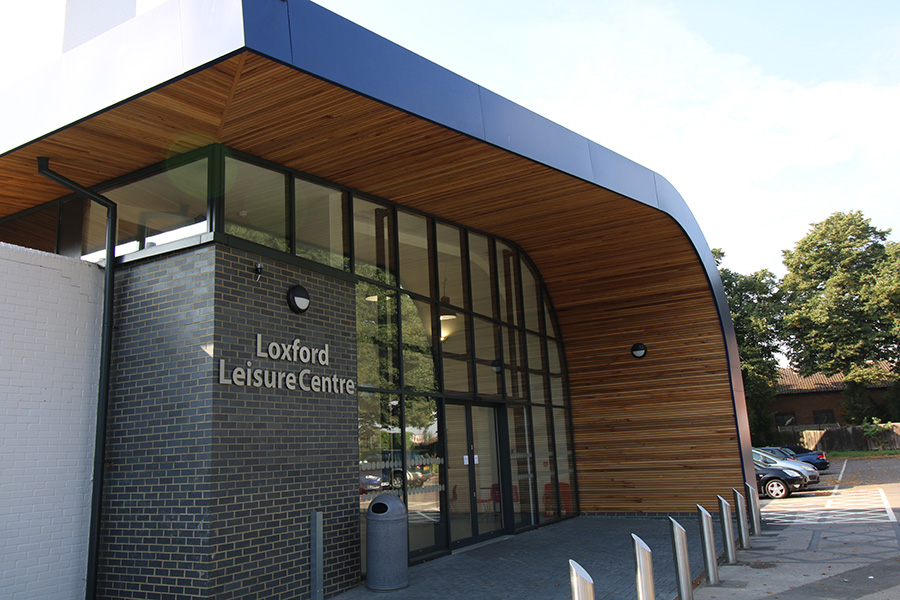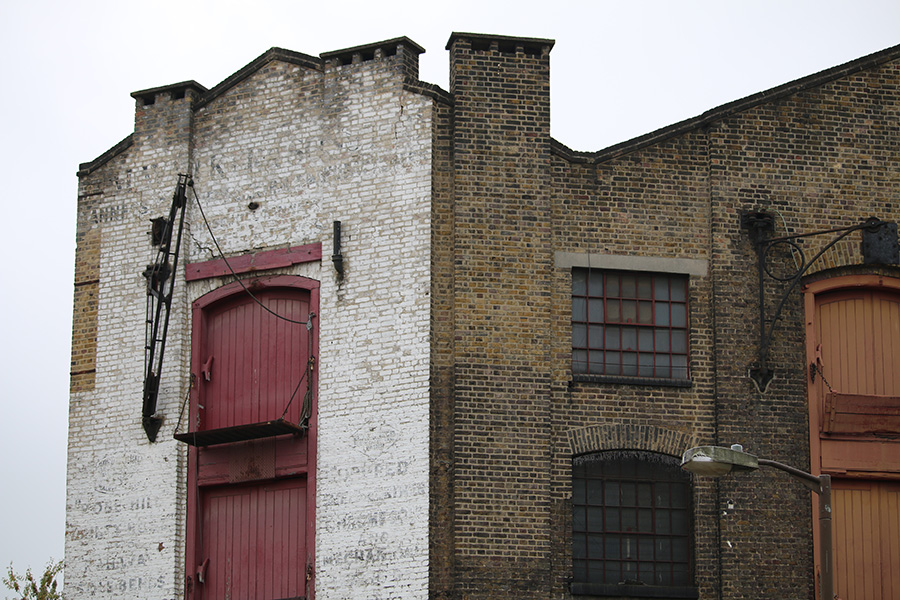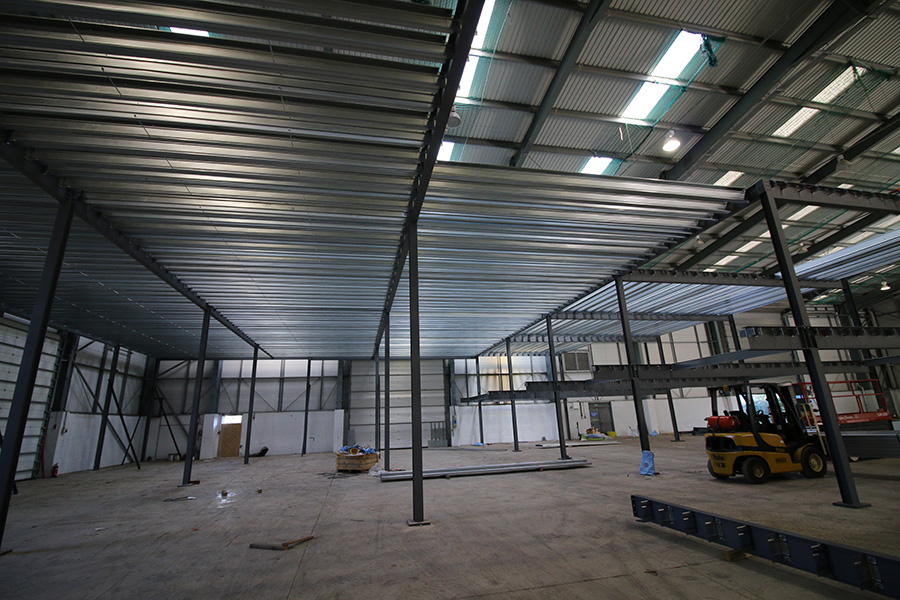
Frequently Asked Questions
General
Yes, as long as the water remains wholesome after the softening process. However, the guidance to the Water Supply (Water Fittings) Regulations states that it is preferable for the cold water supply to the kitchen sink to come direct from the mains supply, in order to minimize the risk of non-wholesome water being supplied due to inadequate operation and maintenance.
No. The Approved Documents provide guidance about compliance with specific aspects of the Building Regulations in some of the more common building situations. There is no obligation to adopt any solution contained in the Approved Document if you prefer to meet the relevant requirement in some other way. However, you should check with your building control body that your proposals comply with the Building Regulations (which are reproduced in the green shaded boxes in the Approved Document).
If guidance in the Approved Document is followed there will be a presumption of compliance with the requirement(s) covered by the guidance. However, this presumption is not conclusive, so simply following guidance does not guarantee compliance in an individual case.
Yes, the provision applies to all hot water systems. However, to reflect the lower risk associated with such a system, the work is not notifiable to the building control body nor is there a requirement for a certificate to be produced that states the work complies with the Building Regulations (unless the associated electrical work is notifiable for the purposes of Part P).
Yes. There are no national or other standards for these products but a storage vessel or calorifier fitted with suitable safety devices that has passed a relevant pressure test, such as BS EN 89:2000 Gas-fired storage water heaters for the production of domestic hot water, should normally be accepted by the building control body as complying with the functional requirements of G3.
No, sub-paragraph 3.13a simply requires that in a vented hot water storage system, “for all indirect heat sources, an overheat cut-out to disconnect the supply of heat to the storage vessel in the event of the stored water overheating” is incorporated.
This is because, for indirect heat sources on vented systems, water overheating is more likely to be for operational reasons, for example, on solar-powered systems because of a very hot day and little hot water use. In such circumstances, self-resetting reduces the inconvenience to users, by resuming normal operation as soon as the operational circumstances change, without compromising safety. However, for direct heat sources, for example, electric immersion heaters, overheating associated with such devices is likely to be due to a failure of the device and the use of a non-self-resetting device would draw attention to the problem.
Requirement G1 states that wholesome water must be supplied to:
any place where drinking water is drawn off.
any sink provided in any area where food is prepared.
It also requires that wholesome or softened wholesome water is supplied to:
any washbasin or bidet provided in or adjacent to a room containing a sanitary convenience.
any washbasin, bidet, fixed bath or shower in a bathroom.
One of the reasons for setting out where wholesome or softened wholesome water should be supplied to is to clarify where it is acceptable for alternative sources of water, such as greywater and rainwater, to be used. G1(2) sets out that such alternative sources of water can be supplied to a sanitary convenience fitted with a flushing device.
This introduces a minimum water efficiency standard into the Building Regulations for the first time for new homes. It requires that the average water usage of a new home (including those created by a change of use) is no more than 125 litres per person per day or 110 litres/person/day if required as part of the planning permission Estimated water usage must be calculated in accordance with the methodology set out in Appendix A of Approved Document G, unless ‘deemed to satisfy’ fittings described in Approved Document G are used.
With regard to supply, the provision requires that heated wholesome water (or softened wholesome water) is provided to any washbasin or bidet provided in or adjacent to a room containing a sanitary convenience, to any washbasin, bidet, bath or shower in a bathroom and to any sink provided in any area where food is prepared. In relation to hot water systems, the provision extends the scope of the previous safety regime to all types of system (not just unvented ones). This includes new guidance in the Approved Document to ensure that all parts of the system are capable of resisting the effects of temperature and pressure. In particular, this introduces guidance to ensure cold water cisterns supplying and receiving water from hot water cisterns are properly supported, following tragedies resulting from just such failures.
In addition, it also introduces a provision that all new homes (including those created by a change of use) have the temperature of the hot water supplied to a bath limited to no more 7 than 48°C. It’s likely that this will normally be complied with by the fitting of a thermostatic mixing valve (TMV).
This provision is similar to that contained in G1 of the previous edition of Approved Document G, but there is no longer any requirement for cleanability in the current edition. It sets out that adequate and suitable sanitary conveniences (WCs and urinals) must be provided in toilets or bathrooms and that adequate hand washing facilities must be provided in or adjacent to rooms containing sanitary conveniences. Any room containing a sanitary convenience, bidet or facility for washing hands associated with a sanitary convenience must be separate from a kitchen or area where food is prepared.
This is a new requirement that seeks to clarify requirements for sanitary provision. A suitable sink must be provided in any area where food is prepared.
It will not. The provision is in terms of the estimated water usage of a home.
No, the requirement to ensure that the temperature of the water delivered to a bath is no more than 48 degrees celsius temperature applies only to baths in new homes (including those created by a change of use), not in existing homes. However, people may want to consider the potential safety benefits of fitting a TMV, or some other means to prevent scalding, when they are adding a bath or having an existing one replaced or repaired, particularly where occupants are known to include those most at risk from scalding, that is, the very young and the very old.
Whilst a combi boiler may store less than 15 litres of hot water, it still needs to be notified as it is a) a combustion appliance and b) forms part of another fixed building service (space heating).
Part G only requires that a WC and/or associated handwashing facilities should be separated by a door from a food preparation area. In dwellings, a lobby is not needed, as illustrated in diagrams 2 and 3 in AD G.
However, for workplaces, the Approved Code of Practice (ACOP) that supports the Workplace (Health, Safety and Welfare) Regulations 1992 requires that no room containing a sanitary convenience should communicate directly with a room where food is processed, prepared or eaten. Therefore, in workplaces (particularly in food businesses such as restaurants, cafes, catering businesses and shops selling food), toilets must not open directly C be ventilated to deter air from the toilet moving to the food handling area.
Metal pipework, such as cast iron, is suitable.
For smaller hot water systems, BRE Information Paper 8/07 indicates that discharges can be made to PVCu stacks, provided that:
relief discharge is from domestic unvented hot water storage systems only – not combi boilers or sealed system boilers.
storage volumes do not exceed about 210 litres.
stacks are fully ventilated (ie. no stack cap or air admittance valve).
pipework complies with BS EN 1329-1:2000 or BS 4514:2001.
As stated in its Introduction section, the guidance in the Approved Document is intended to provide advice on how to comply with the requirements set out in the Building Regulations and that “there may well be other ways of achieving compliance with the requirements”. The Department’s view is that it would be acceptable, subject to also complying with subparagraphs a, b and d of 3.60, for these pipes to be polypropylene to BS EN 1451-1, as recommended in BRE Information Paper 8/07.
This requires that in dwellings and in buildings containing one or more rooms for residential purposes a bathroom must be provided containing a wash basin and either a fixed bath or shower. This requirement is the same as in the previous edition but is now extended to include buildings containing one or more rooms for residential purposes for example hostels as well as to dwellings.
Emergency replacement of a cylinder on a like-for-like basis would mean that the installation is no more unsatisfactory than before, so it would not be classed as a material alteration and therefore not subject to building regulations as long as the work does not adversely affect the energy and safety controls.
However, where reasonably practicable, it would be good practice to provide the system with overheat protection as described in the Approved Document, including a non-resetting energy cut-out to any immersion heater. It would also be good practice to check that the support of any cold water cistern supplying the system complies with the guidance given in paragraph 3.15 of the Approved Document.
We envisage that the Water Calculator will be completed initially when fittings and appliances are specified during the design stage and then revised if those fittings subsequently change. However, the provision does not require this, simply that a notice is given to the building control body within five days of the completion of work (or, where the building control body is an approved inspector, not later than the date on which the initial notice ceases to be in force under regulation of the Building (Approved Inspectors etc) Regulations 2010 if that is earlier). The regulations require only that the notice states the potential consumption, however, we envisage that, in practice, a copy of the completed calculation table will be submitted to the building control body.
Information can be found from manufacturers and from some independent websites. The calculation should be based upon the data for the fittings actually installed.
The table below shows which edition applies. However, the developer can choose to use a later version. Work started or building notice, full plans application or initial notice submitted –
Edition
Before 1 October 2015 – 2010 edition with 2010 and 2013 amendments
Between 1 October 2015 and 15 February 2016 – Volume 1: 2015 edition
After 15 February 2016 – Volume 1: 2015 edition with 2016 amendments
Note: The 2016 changes are included on the amendment slip issued by RIBA Enterprises for copies purchased after??? 2015.
The concept of “softened wholesome water” was introduced into Part G because in certain extremely hard water areas the water softening process can lead to sodium levels going beyond what is acceptable for wholesome water. This amendment makes clear that it is acceptable for such “softened wholesome water” to be supplied to washbasins, bidets, baths and showers.
Technical
Part A - Structure
Yes, as long as the water remains wholesome after the softening process. However, the guidance to the Water Supply (Water Fittings) Regulations states that it is preferable for the cold water supply to the kitchen sink to come direct from the mains supply, in order to minimize the risk of non-wholesome water being supplied due to inadequate operation and maintenance.
No. The Approved Documents provide guidance about compliance with specific aspects of the Building Regulations in some of the more common building situations. There is no obligation to adopt any solution contained in the Approved Document if you prefer to meet the relevant requirement in some other way. However, you should check with your building control body that your proposals comply with the Building Regulations (which are reproduced in the green shaded boxes in the Approved Document).
If guidance in the Approved Document is followed there will be a presumption of compliance with the requirement(s) covered by the guidance. However, this presumption is not conclusive, so simply following guidance does not guarantee compliance in an individual case.
Yes, the provision applies to all hot water systems. However, to reflect the lower risk associated with such a system, the work is not notifiable to the building control body nor is there a requirement for a certificate to be produced that states the work complies with the Building Regulations (unless the associated electrical work is notifiable for the purposes of Part P).
Yes. There are no national or other standards for these products but a storage vessel or calorifier fitted with suitable safety devices that has passed a relevant pressure test, such as BS EN 89:2000 Gas-fired storage water heaters for the production of domestic hot water, should normally be accepted by the building control body as complying with the functional requirements of G3.
No, sub-paragraph 3.13a simply requires that in a vented hot water storage system, “for all indirect heat sources, an overheat cut-out to disconnect the supply of heat to the storage vessel in the event of the stored water overheating” is incorporated.
This is because, for indirect heat sources on vented systems, water overheating is more likely to be for operational reasons, for example, on solar-powered systems because of a very hot day and little hot water use. In such circumstances, self-resetting reduces the inconvenience to users, by resuming normal operation as soon as the operational circumstances change, without compromising safety. However, for direct heat sources, for example, electric immersion heaters, overheating associated with such devices is likely to be due to a failure of the device and the use of a non-self-resetting device would draw attention to the problem.
Requirement G1 states that wholesome water must be supplied to:
any place where drinking water is drawn off.
any sink provided in any area where food is prepared.
It also requires that wholesome or softened wholesome water is supplied to:
any washbasin or bidet provided in or adjacent to a room containing a sanitary convenience.
any washbasin, bidet, fixed bath or shower in a bathroom.
One of the reasons for setting out where wholesome or softened wholesome water should be supplied to is to clarify where it is acceptable for alternative sources of water, such as greywater and rainwater, to be used. G1(2) sets out that such alternative sources of water can be supplied to a sanitary convenience fitted with a flushing device.
This introduces a minimum water efficiency standard into the Building Regulations for the first time for new homes. It requires that the average water usage of a new home (including those created by a change of use) is no more than 125 litres per person per day or 110 litres/person/day if required as part of the planning permission Estimated water usage must be calculated in accordance with the methodology set out in Appendix A of Approved Document G, unless ‘deemed to satisfy’ fittings described in Approved Document G are used.
With regard to supply, the provision requires that heated wholesome water (or softened wholesome water) is provided to any washbasin or bidet provided in or adjacent to a room containing a sanitary convenience, to any washbasin, bidet, bath or shower in a bathroom and to any sink provided in any area where food is prepared. In relation to hot water systems, the provision extends the scope of the previous safety regime to all types of system (not just unvented ones). This includes new guidance in the Approved Document to ensure that all parts of the system are capable of resisting the effects of temperature and pressure. In particular, this introduces guidance to ensure cold water cisterns supplying and receiving water from hot water cisterns are properly supported, following tragedies resulting from just such failures.
In addition, it also introduces a provision that all new homes (including those created by a change of use) have the temperature of the hot water supplied to a bath limited to no more 7 than 48°C. It’s likely that this will normally be complied with by the fitting of a thermostatic mixing valve (TMV).
This provision is similar to that contained in G1 of the previous edition of Approved Document G, but there is no longer any requirement for cleanability in the current edition. It sets out that adequate and suitable sanitary conveniences (WCs and urinals) must be provided in toilets or bathrooms and that adequate hand washing facilities must be provided in or adjacent to rooms containing sanitary conveniences. Any room containing a sanitary convenience, bidet or facility for washing hands associated with a sanitary convenience must be separate from a kitchen or area where food is prepared.
This is a new requirement that seeks to clarify requirements for sanitary provision. A suitable sink must be provided in any area where food is prepared.
It will not. The provision is in terms of the estimated water usage of a home.
No, the requirement to ensure that the temperature of the water delivered to a bath is no more than 48 degrees celsius temperature applies only to baths in new homes (including those created by a change of use), not in existing homes. However, people may want to consider the potential safety benefits of fitting a TMV, or some other means to prevent scalding, when they are adding a bath or having an existing one replaced or repaired, particularly where occupants are known to include those most at risk from scalding, that is, the very young and the very old.
Whilst a combi boiler may store less than 15 litres of hot water, it still needs to be notified as it is a) a combustion appliance and b) forms part of another fixed building service (space heating).
Part G only requires that a WC and/or associated handwashing facilities should be separated by a door from a food preparation area. In dwellings, a lobby is not needed, as illustrated in diagrams 2 and 3 in AD G.
However, for workplaces, the Approved Code of Practice (ACOP) that supports the Workplace (Health, Safety and Welfare) Regulations 1992 requires that no room containing a sanitary convenience should communicate directly with a room where food is processed, prepared or eaten. Therefore, in workplaces (particularly in food businesses such as restaurants, cafes, catering businesses and shops selling food), toilets must not open directly C be ventilated to deter air from the toilet moving to the food handling area.
Metal pipework, such as cast iron, is suitable.
For smaller hot water systems, BRE Information Paper 8/07 indicates that discharges can be made to PVCu stacks, provided that:
relief discharge is from domestic unvented hot water storage systems only – not combi boilers or sealed system boilers.
storage volumes do not exceed about 210 litres.
stacks are fully ventilated (ie. no stack cap or air admittance valve).
pipework complies with BS EN 1329-1:2000 or BS 4514:2001.
As stated in its Introduction section, the guidance in the Approved Document is intended to provide advice on how to comply with the requirements set out in the Building Regulations and that “there may well be other ways of achieving compliance with the requirements”. The Department’s view is that it would be acceptable, subject to also complying with subparagraphs a, b and d of 3.60, for these pipes to be polypropylene to BS EN 1451-1, as recommended in BRE Information Paper 8/07.
This requires that in dwellings and in buildings containing one or more rooms for residential purposes a bathroom must be provided containing a wash basin and either a fixed bath or shower. This requirement is the same as in the previous edition but is now extended to include buildings containing one or more rooms for residential purposes for example hostels as well as to dwellings.
Emergency replacement of a cylinder on a like-for-like basis would mean that the installation is no more unsatisfactory than before, so it would not be classed as a material alteration and therefore not subject to building regulations as long as the work does not adversely affect the energy and safety controls.
However, where reasonably practicable, it would be good practice to provide the system with overheat protection as described in the Approved Document, including a non-resetting energy cut-out to any immersion heater. It would also be good practice to check that the support of any cold water cistern supplying the system complies with the guidance given in paragraph 3.15 of the Approved Document.
We envisage that the Water Calculator will be completed initially when fittings and appliances are specified during the design stage and then revised if those fittings subsequently change. However, the provision does not require this, simply that a notice is given to the building control body within five days of the completion of work (or, where the building control body is an approved inspector, not later than the date on which the initial notice ceases to be in force under regulation of the Building (Approved Inspectors etc) Regulations 2010 if that is earlier). The regulations require only that the notice states the potential consumption, however, we envisage that, in practice, a copy of the completed calculation table will be submitted to the building control body.
Information can be found from manufacturers and from some independent websites. The calculation should be based upon the data for the fittings actually installed.
The table below shows which edition applies. However, the developer can choose to use a later version. Work started or building notice, full plans application or initial notice submitted –
Edition
Before 1 October 2015 – 2010 edition with 2010 and 2013 amendments
Between 1 October 2015 and 15 February 2016 – Volume 1: 2015 edition
After 15 February 2016 – Volume 1: 2015 edition with 2016 amendments
Note: The 2016 changes are included on the amendment slip issued by RIBA Enterprises for copies purchased after??? 2015.
The concept of “softened wholesome water” was introduced into Part G because in certain extremely hard water areas the water softening process can lead to sodium levels going beyond what is acceptable for wholesome water. This amendment makes clear that it is acceptable for such “softened wholesome water” to be supplied to washbasins, bidets, baths and showers.
Part B - Fire Safety
Yes, as long as the water remains wholesome after the softening process. However, the guidance to the Water Supply (Water Fittings) Regulations states that it is preferable for the cold water supply to the kitchen sink to come direct from the mains supply, in order to minimize the risk of non-wholesome water being supplied due to inadequate operation and maintenance.
No. The Approved Documents provide guidance about compliance with specific aspects of the Building Regulations in some of the more common building situations. There is no obligation to adopt any solution contained in the Approved Document if you prefer to meet the relevant requirement in some other way. However, you should check with your building control body that your proposals comply with the Building Regulations (which are reproduced in the green shaded boxes in the Approved Document).
If guidance in the Approved Document is followed there will be a presumption of compliance with the requirement(s) covered by the guidance. However, this presumption is not conclusive, so simply following guidance does not guarantee compliance in an individual case.
Yes, the provision applies to all hot water systems. However, to reflect the lower risk associated with such a system, the work is not notifiable to the building control body nor is there a requirement for a certificate to be produced that states the work complies with the Building Regulations (unless the associated electrical work is notifiable for the purposes of Part P).
Yes. There are no national or other standards for these products but a storage vessel or calorifier fitted with suitable safety devices that has passed a relevant pressure test, such as BS EN 89:2000 Gas-fired storage water heaters for the production of domestic hot water, should normally be accepted by the building control body as complying with the functional requirements of G3.
No, sub-paragraph 3.13a simply requires that in a vented hot water storage system, “for all indirect heat sources, an overheat cut-out to disconnect the supply of heat to the storage vessel in the event of the stored water overheating” is incorporated.
This is because, for indirect heat sources on vented systems, water overheating is more likely to be for operational reasons, for example, on solar-powered systems because of a very hot day and little hot water use. In such circumstances, self-resetting reduces the inconvenience to users, by resuming normal operation as soon as the operational circumstances change, without compromising safety. However, for direct heat sources, for example, electric immersion heaters, overheating associated with such devices is likely to be due to a failure of the device and the use of a non-self-resetting device would draw attention to the problem.
Requirement G1 states that wholesome water must be supplied to:
any place where drinking water is drawn off.
any sink provided in any area where food is prepared.
It also requires that wholesome or softened wholesome water is supplied to:
any washbasin or bidet provided in or adjacent to a room containing a sanitary convenience.
any washbasin, bidet, fixed bath or shower in a bathroom.
One of the reasons for setting out where wholesome or softened wholesome water should be supplied to is to clarify where it is acceptable for alternative sources of water, such as greywater and rainwater, to be used. G1(2) sets out that such alternative sources of water can be supplied to a sanitary convenience fitted with a flushing device.
This introduces a minimum water efficiency standard into the Building Regulations for the first time for new homes. It requires that the average water usage of a new home (including those created by a change of use) is no more than 125 litres per person per day or 110 litres/person/day if required as part of the planning permission Estimated water usage must be calculated in accordance with the methodology set out in Appendix A of Approved Document G, unless ‘deemed to satisfy’ fittings described in Approved Document G are used.
With regard to supply, the provision requires that heated wholesome water (or softened wholesome water) is provided to any washbasin or bidet provided in or adjacent to a room containing a sanitary convenience, to any washbasin, bidet, bath or shower in a bathroom and to any sink provided in any area where food is prepared. In relation to hot water systems, the provision extends the scope of the previous safety regime to all types of system (not just unvented ones). This includes new guidance in the Approved Document to ensure that all parts of the system are capable of resisting the effects of temperature and pressure. In particular, this introduces guidance to ensure cold water cisterns supplying and receiving water from hot water cisterns are properly supported, following tragedies resulting from just such failures.
In addition, it also introduces a provision that all new homes (including those created by a change of use) have the temperature of the hot water supplied to a bath limited to no more 7 than 48°C. It’s likely that this will normally be complied with by the fitting of a thermostatic mixing valve (TMV).
This provision is similar to that contained in G1 of the previous edition of Approved Document G, but there is no longer any requirement for cleanability in the current edition. It sets out that adequate and suitable sanitary conveniences (WCs and urinals) must be provided in toilets or bathrooms and that adequate hand washing facilities must be provided in or adjacent to rooms containing sanitary conveniences. Any room containing a sanitary convenience, bidet or facility for washing hands associated with a sanitary convenience must be separate from a kitchen or area where food is prepared.
This is a new requirement that seeks to clarify requirements for sanitary provision. A suitable sink must be provided in any area where food is prepared.
It will not. The provision is in terms of the estimated water usage of a home.
No, the requirement to ensure that the temperature of the water delivered to a bath is no more than 48 degrees celsius temperature applies only to baths in new homes (including those created by a change of use), not in existing homes. However, people may want to consider the potential safety benefits of fitting a TMV, or some other means to prevent scalding, when they are adding a bath or having an existing one replaced or repaired, particularly where occupants are known to include those most at risk from scalding, that is, the very young and the very old.
Whilst a combi boiler may store less than 15 litres of hot water, it still needs to be notified as it is a) a combustion appliance and b) forms part of another fixed building service (space heating).
Part G only requires that a WC and/or associated handwashing facilities should be separated by a door from a food preparation area. In dwellings, a lobby is not needed, as illustrated in diagrams 2 and 3 in AD G.
However, for workplaces, the Approved Code of Practice (ACOP) that supports the Workplace (Health, Safety and Welfare) Regulations 1992 requires that no room containing a sanitary convenience should communicate directly with a room where food is processed, prepared or eaten. Therefore, in workplaces (particularly in food businesses such as restaurants, cafes, catering businesses and shops selling food), toilets must not open directly C be ventilated to deter air from the toilet moving to the food handling area.
Metal pipework, such as cast iron, is suitable.
For smaller hot water systems, BRE Information Paper 8/07 indicates that discharges can be made to PVCu stacks, provided that:
relief discharge is from domestic unvented hot water storage systems only – not combi boilers or sealed system boilers.
storage volumes do not exceed about 210 litres.
stacks are fully ventilated (ie. no stack cap or air admittance valve).
pipework complies with BS EN 1329-1:2000 or BS 4514:2001.
As stated in its Introduction section, the guidance in the Approved Document is intended to provide advice on how to comply with the requirements set out in the Building Regulations and that “there may well be other ways of achieving compliance with the requirements”. The Department’s view is that it would be acceptable, subject to also complying with subparagraphs a, b and d of 3.60, for these pipes to be polypropylene to BS EN 1451-1, as recommended in BRE Information Paper 8/07.
This requires that in dwellings and in buildings containing one or more rooms for residential purposes a bathroom must be provided containing a wash basin and either a fixed bath or shower. This requirement is the same as in the previous edition but is now extended to include buildings containing one or more rooms for residential purposes for example hostels as well as to dwellings.
Emergency replacement of a cylinder on a like-for-like basis would mean that the installation is no more unsatisfactory than before, so it would not be classed as a material alteration and therefore not subject to building regulations as long as the work does not adversely affect the energy and safety controls.
However, where reasonably practicable, it would be good practice to provide the system with overheat protection as described in the Approved Document, including a non-resetting energy cut-out to any immersion heater. It would also be good practice to check that the support of any cold water cistern supplying the system complies with the guidance given in paragraph 3.15 of the Approved Document.
We envisage that the Water Calculator will be completed initially when fittings and appliances are specified during the design stage and then revised if those fittings subsequently change. However, the provision does not require this, simply that a notice is given to the building control body within five days of the completion of work (or, where the building control body is an approved inspector, not later than the date on which the initial notice ceases to be in force under regulation of the Building (Approved Inspectors etc) Regulations 2010 if that is earlier). The regulations require only that the notice states the potential consumption, however, we envisage that, in practice, a copy of the completed calculation table will be submitted to the building control body.
Information can be found from manufacturers and from some independent websites. The calculation should be based upon the data for the fittings actually installed.
The table below shows which edition applies. However, the developer can choose to use a later version. Work started or building notice, full plans application or initial notice submitted –
Edition
Before 1 October 2015 – 2010 edition with 2010 and 2013 amendments
Between 1 October 2015 and 15 February 2016 – Volume 1: 2015 edition
After 15 February 2016 – Volume 1: 2015 edition with 2016 amendments
Note: The 2016 changes are included on the amendment slip issued by RIBA Enterprises for copies purchased after??? 2015.
The concept of “softened wholesome water” was introduced into Part G because in certain extremely hard water areas the water softening process can lead to sodium levels going beyond what is acceptable for wholesome water. This amendment makes clear that it is acceptable for such “softened wholesome water” to be supplied to washbasins, bidets, baths and showers.
Part C - Site preparation and resistance to contaminates and moisture
Yes, as long as the water remains wholesome after the softening process. However, the guidance to the Water Supply (Water Fittings) Regulations states that it is preferable for the cold water supply to the kitchen sink to come direct from the mains supply, in order to minimize the risk of non-wholesome water being supplied due to inadequate operation and maintenance.
No. The Approved Documents provide guidance about compliance with specific aspects of the Building Regulations in some of the more common building situations. There is no obligation to adopt any solution contained in the Approved Document if you prefer to meet the relevant requirement in some other way. However, you should check with your building control body that your proposals comply with the Building Regulations (which are reproduced in the green shaded boxes in the Approved Document).
If guidance in the Approved Document is followed there will be a presumption of compliance with the requirement(s) covered by the guidance. However, this presumption is not conclusive, so simply following guidance does not guarantee compliance in an individual case.
Yes, the provision applies to all hot water systems. However, to reflect the lower risk associated with such a system, the work is not notifiable to the building control body nor is there a requirement for a certificate to be produced that states the work complies with the Building Regulations (unless the associated electrical work is notifiable for the purposes of Part P).
Yes. There are no national or other standards for these products but a storage vessel or calorifier fitted with suitable safety devices that has passed a relevant pressure test, such as BS EN 89:2000 Gas-fired storage water heaters for the production of domestic hot water, should normally be accepted by the building control body as complying with the functional requirements of G3.
No, sub-paragraph 3.13a simply requires that in a vented hot water storage system, “for all indirect heat sources, an overheat cut-out to disconnect the supply of heat to the storage vessel in the event of the stored water overheating” is incorporated.
This is because, for indirect heat sources on vented systems, water overheating is more likely to be for operational reasons, for example, on solar-powered systems because of a very hot day and little hot water use. In such circumstances, self-resetting reduces the inconvenience to users, by resuming normal operation as soon as the operational circumstances change, without compromising safety. However, for direct heat sources, for example, electric immersion heaters, overheating associated with such devices is likely to be due to a failure of the device and the use of a non-self-resetting device would draw attention to the problem.
Requirement G1 states that wholesome water must be supplied to:
any place where drinking water is drawn off.
any sink provided in any area where food is prepared.
It also requires that wholesome or softened wholesome water is supplied to:
any washbasin or bidet provided in or adjacent to a room containing a sanitary convenience.
any washbasin, bidet, fixed bath or shower in a bathroom.
One of the reasons for setting out where wholesome or softened wholesome water should be supplied to is to clarify where it is acceptable for alternative sources of water, such as greywater and rainwater, to be used. G1(2) sets out that such alternative sources of water can be supplied to a sanitary convenience fitted with a flushing device.
This introduces a minimum water efficiency standard into the Building Regulations for the first time for new homes. It requires that the average water usage of a new home (including those created by a change of use) is no more than 125 litres per person per day or 110 litres/person/day if required as part of the planning permission Estimated water usage must be calculated in accordance with the methodology set out in Appendix A of Approved Document G, unless ‘deemed to satisfy’ fittings described in Approved Document G are used.
With regard to supply, the provision requires that heated wholesome water (or softened wholesome water) is provided to any washbasin or bidet provided in or adjacent to a room containing a sanitary convenience, to any washbasin, bidet, bath or shower in a bathroom and to any sink provided in any area where food is prepared. In relation to hot water systems, the provision extends the scope of the previous safety regime to all types of system (not just unvented ones). This includes new guidance in the Approved Document to ensure that all parts of the system are capable of resisting the effects of temperature and pressure. In particular, this introduces guidance to ensure cold water cisterns supplying and receiving water from hot water cisterns are properly supported, following tragedies resulting from just such failures.
In addition, it also introduces a provision that all new homes (including those created by a change of use) have the temperature of the hot water supplied to a bath limited to no more 7 than 48°C. It’s likely that this will normally be complied with by the fitting of a thermostatic mixing valve (TMV).
This provision is similar to that contained in G1 of the previous edition of Approved Document G, but there is no longer any requirement for cleanability in the current edition. It sets out that adequate and suitable sanitary conveniences (WCs and urinals) must be provided in toilets or bathrooms and that adequate hand washing facilities must be provided in or adjacent to rooms containing sanitary conveniences. Any room containing a sanitary convenience, bidet or facility for washing hands associated with a sanitary convenience must be separate from a kitchen or area where food is prepared.
This is a new requirement that seeks to clarify requirements for sanitary provision. A suitable sink must be provided in any area where food is prepared.
It will not. The provision is in terms of the estimated water usage of a home.
No, the requirement to ensure that the temperature of the water delivered to a bath is no more than 48 degrees celsius temperature applies only to baths in new homes (including those created by a change of use), not in existing homes. However, people may want to consider the potential safety benefits of fitting a TMV, or some other means to prevent scalding, when they are adding a bath or having an existing one replaced or repaired, particularly where occupants are known to include those most at risk from scalding, that is, the very young and the very old.
Whilst a combi boiler may store less than 15 litres of hot water, it still needs to be notified as it is a) a combustion appliance and b) forms part of another fixed building service (space heating).
Part G only requires that a WC and/or associated handwashing facilities should be separated by a door from a food preparation area. In dwellings, a lobby is not needed, as illustrated in diagrams 2 and 3 in AD G.
However, for workplaces, the Approved Code of Practice (ACOP) that supports the Workplace (Health, Safety and Welfare) Regulations 1992 requires that no room containing a sanitary convenience should communicate directly with a room where food is processed, prepared or eaten. Therefore, in workplaces (particularly in food businesses such as restaurants, cafes, catering businesses and shops selling food), toilets must not open directly C be ventilated to deter air from the toilet moving to the food handling area.
Metal pipework, such as cast iron, is suitable.
For smaller hot water systems, BRE Information Paper 8/07 indicates that discharges can be made to PVCu stacks, provided that:
relief discharge is from domestic unvented hot water storage systems only – not combi boilers or sealed system boilers.
storage volumes do not exceed about 210 litres.
stacks are fully ventilated (ie. no stack cap or air admittance valve).
pipework complies with BS EN 1329-1:2000 or BS 4514:2001.
As stated in its Introduction section, the guidance in the Approved Document is intended to provide advice on how to comply with the requirements set out in the Building Regulations and that “there may well be other ways of achieving compliance with the requirements”. The Department’s view is that it would be acceptable, subject to also complying with subparagraphs a, b and d of 3.60, for these pipes to be polypropylene to BS EN 1451-1, as recommended in BRE Information Paper 8/07.
This requires that in dwellings and in buildings containing one or more rooms for residential purposes a bathroom must be provided containing a wash basin and either a fixed bath or shower. This requirement is the same as in the previous edition but is now extended to include buildings containing one or more rooms for residential purposes for example hostels as well as to dwellings.
Emergency replacement of a cylinder on a like-for-like basis would mean that the installation is no more unsatisfactory than before, so it would not be classed as a material alteration and therefore not subject to building regulations as long as the work does not adversely affect the energy and safety controls.
However, where reasonably practicable, it would be good practice to provide the system with overheat protection as described in the Approved Document, including a non-resetting energy cut-out to any immersion heater. It would also be good practice to check that the support of any cold water cistern supplying the system complies with the guidance given in paragraph 3.15 of the Approved Document.
We envisage that the Water Calculator will be completed initially when fittings and appliances are specified during the design stage and then revised if those fittings subsequently change. However, the provision does not require this, simply that a notice is given to the building control body within five days of the completion of work (or, where the building control body is an approved inspector, not later than the date on which the initial notice ceases to be in force under regulation of the Building (Approved Inspectors etc) Regulations 2010 if that is earlier). The regulations require only that the notice states the potential consumption, however, we envisage that, in practice, a copy of the completed calculation table will be submitted to the building control body.
Information can be found from manufacturers and from some independent websites. The calculation should be based upon the data for the fittings actually installed.
The table below shows which edition applies. However, the developer can choose to use a later version. Work started or building notice, full plans application or initial notice submitted –
Edition
Before 1 October 2015 – 2010 edition with 2010 and 2013 amendments
Between 1 October 2015 and 15 February 2016 – Volume 1: 2015 edition
After 15 February 2016 – Volume 1: 2015 edition with 2016 amendments
Note: The 2016 changes are included on the amendment slip issued by RIBA Enterprises for copies purchased after??? 2015.
The concept of “softened wholesome water” was introduced into Part G because in certain extremely hard water areas the water softening process can lead to sodium levels going beyond what is acceptable for wholesome water. This amendment makes clear that it is acceptable for such “softened wholesome water” to be supplied to washbasins, bidets, baths and showers.
Part E - Resistance to the passage of sound
Yes, as long as the water remains wholesome after the softening process. However, the guidance to the Water Supply (Water Fittings) Regulations states that it is preferable for the cold water supply to the kitchen sink to come direct from the mains supply, in order to minimize the risk of non-wholesome water being supplied due to inadequate operation and maintenance.
No. The Approved Documents provide guidance about compliance with specific aspects of the Building Regulations in some of the more common building situations. There is no obligation to adopt any solution contained in the Approved Document if you prefer to meet the relevant requirement in some other way. However, you should check with your building control body that your proposals comply with the Building Regulations (which are reproduced in the green shaded boxes in the Approved Document).
If guidance in the Approved Document is followed there will be a presumption of compliance with the requirement(s) covered by the guidance. However, this presumption is not conclusive, so simply following guidance does not guarantee compliance in an individual case.
Yes, the provision applies to all hot water systems. However, to reflect the lower risk associated with such a system, the work is not notifiable to the building control body nor is there a requirement for a certificate to be produced that states the work complies with the Building Regulations (unless the associated electrical work is notifiable for the purposes of Part P).
Yes. There are no national or other standards for these products but a storage vessel or calorifier fitted with suitable safety devices that has passed a relevant pressure test, such as BS EN 89:2000 Gas-fired storage water heaters for the production of domestic hot water, should normally be accepted by the building control body as complying with the functional requirements of G3.
No, sub-paragraph 3.13a simply requires that in a vented hot water storage system, “for all indirect heat sources, an overheat cut-out to disconnect the supply of heat to the storage vessel in the event of the stored water overheating” is incorporated.
This is because, for indirect heat sources on vented systems, water overheating is more likely to be for operational reasons, for example, on solar-powered systems because of a very hot day and little hot water use. In such circumstances, self-resetting reduces the inconvenience to users, by resuming normal operation as soon as the operational circumstances change, without compromising safety. However, for direct heat sources, for example, electric immersion heaters, overheating associated with such devices is likely to be due to a failure of the device and the use of a non-self-resetting device would draw attention to the problem.
Requirement G1 states that wholesome water must be supplied to:
any place where drinking water is drawn off.
any sink provided in any area where food is prepared.
It also requires that wholesome or softened wholesome water is supplied to:
any washbasin or bidet provided in or adjacent to a room containing a sanitary convenience.
any washbasin, bidet, fixed bath or shower in a bathroom.
One of the reasons for setting out where wholesome or softened wholesome water should be supplied to is to clarify where it is acceptable for alternative sources of water, such as greywater and rainwater, to be used. G1(2) sets out that such alternative sources of water can be supplied to a sanitary convenience fitted with a flushing device.
This introduces a minimum water efficiency standard into the Building Regulations for the first time for new homes. It requires that the average water usage of a new home (including those created by a change of use) is no more than 125 litres per person per day or 110 litres/person/day if required as part of the planning permission Estimated water usage must be calculated in accordance with the methodology set out in Appendix A of Approved Document G, unless ‘deemed to satisfy’ fittings described in Approved Document G are used.
With regard to supply, the provision requires that heated wholesome water (or softened wholesome water) is provided to any washbasin or bidet provided in or adjacent to a room containing a sanitary convenience, to any washbasin, bidet, bath or shower in a bathroom and to any sink provided in any area where food is prepared. In relation to hot water systems, the provision extends the scope of the previous safety regime to all types of system (not just unvented ones). This includes new guidance in the Approved Document to ensure that all parts of the system are capable of resisting the effects of temperature and pressure. In particular, this introduces guidance to ensure cold water cisterns supplying and receiving water from hot water cisterns are properly supported, following tragedies resulting from just such failures.
In addition, it also introduces a provision that all new homes (including those created by a change of use) have the temperature of the hot water supplied to a bath limited to no more 7 than 48°C. It’s likely that this will normally be complied with by the fitting of a thermostatic mixing valve (TMV).
This provision is similar to that contained in G1 of the previous edition of Approved Document G, but there is no longer any requirement for cleanability in the current edition. It sets out that adequate and suitable sanitary conveniences (WCs and urinals) must be provided in toilets or bathrooms and that adequate hand washing facilities must be provided in or adjacent to rooms containing sanitary conveniences. Any room containing a sanitary convenience, bidet or facility for washing hands associated with a sanitary convenience must be separate from a kitchen or area where food is prepared.
This is a new requirement that seeks to clarify requirements for sanitary provision. A suitable sink must be provided in any area where food is prepared.
It will not. The provision is in terms of the estimated water usage of a home.
No, the requirement to ensure that the temperature of the water delivered to a bath is no more than 48 degrees celsius temperature applies only to baths in new homes (including those created by a change of use), not in existing homes. However, people may want to consider the potential safety benefits of fitting a TMV, or some other means to prevent scalding, when they are adding a bath or having an existing one replaced or repaired, particularly where occupants are known to include those most at risk from scalding, that is, the very young and the very old.
Whilst a combi boiler may store less than 15 litres of hot water, it still needs to be notified as it is a) a combustion appliance and b) forms part of another fixed building service (space heating).
Part G only requires that a WC and/or associated handwashing facilities should be separated by a door from a food preparation area. In dwellings, a lobby is not needed, as illustrated in diagrams 2 and 3 in AD G.
However, for workplaces, the Approved Code of Practice (ACOP) that supports the Workplace (Health, Safety and Welfare) Regulations 1992 requires that no room containing a sanitary convenience should communicate directly with a room where food is processed, prepared or eaten. Therefore, in workplaces (particularly in food businesses such as restaurants, cafes, catering businesses and shops selling food), toilets must not open directly C be ventilated to deter air from the toilet moving to the food handling area.
Metal pipework, such as cast iron, is suitable.
For smaller hot water systems, BRE Information Paper 8/07 indicates that discharges can be made to PVCu stacks, provided that:
relief discharge is from domestic unvented hot water storage systems only – not combi boilers or sealed system boilers.
storage volumes do not exceed about 210 litres.
stacks are fully ventilated (ie. no stack cap or air admittance valve).
pipework complies with BS EN 1329-1:2000 or BS 4514:2001.
As stated in its Introduction section, the guidance in the Approved Document is intended to provide advice on how to comply with the requirements set out in the Building Regulations and that “there may well be other ways of achieving compliance with the requirements”. The Department’s view is that it would be acceptable, subject to also complying with subparagraphs a, b and d of 3.60, for these pipes to be polypropylene to BS EN 1451-1, as recommended in BRE Information Paper 8/07.
This requires that in dwellings and in buildings containing one or more rooms for residential purposes a bathroom must be provided containing a wash basin and either a fixed bath or shower. This requirement is the same as in the previous edition but is now extended to include buildings containing one or more rooms for residential purposes for example hostels as well as to dwellings.
Emergency replacement of a cylinder on a like-for-like basis would mean that the installation is no more unsatisfactory than before, so it would not be classed as a material alteration and therefore not subject to building regulations as long as the work does not adversely affect the energy and safety controls.
However, where reasonably practicable, it would be good practice to provide the system with overheat protection as described in the Approved Document, including a non-resetting energy cut-out to any immersion heater. It would also be good practice to check that the support of any cold water cistern supplying the system complies with the guidance given in paragraph 3.15 of the Approved Document.
We envisage that the Water Calculator will be completed initially when fittings and appliances are specified during the design stage and then revised if those fittings subsequently change. However, the provision does not require this, simply that a notice is given to the building control body within five days of the completion of work (or, where the building control body is an approved inspector, not later than the date on which the initial notice ceases to be in force under regulation of the Building (Approved Inspectors etc) Regulations 2010 if that is earlier). The regulations require only that the notice states the potential consumption, however, we envisage that, in practice, a copy of the completed calculation table will be submitted to the building control body.
Information can be found from manufacturers and from some independent websites. The calculation should be based upon the data for the fittings actually installed.
The table below shows which edition applies. However, the developer can choose to use a later version. Work started or building notice, full plans application or initial notice submitted –
Edition
Before 1 October 2015 – 2010 edition with 2010 and 2013 amendments
Between 1 October 2015 and 15 February 2016 – Volume 1: 2015 edition
After 15 February 2016 – Volume 1: 2015 edition with 2016 amendments
Note: The 2016 changes are included on the amendment slip issued by RIBA Enterprises for copies purchased after??? 2015.
The concept of “softened wholesome water” was introduced into Part G because in certain extremely hard water areas the water softening process can lead to sodium levels going beyond what is acceptable for wholesome water. This amendment makes clear that it is acceptable for such “softened wholesome water” to be supplied to washbasins, bidets, baths and showers.
Part G - Sanitation, hot water safety and water efficiency
Yes, as long as the water remains wholesome after the softening process. However, the guidance to the Water Supply (Water Fittings) Regulations states that it is preferable for the cold water supply to the kitchen sink to come direct from the mains supply, in order to minimize the risk of non-wholesome water being supplied due to inadequate operation and maintenance.
No. The Approved Documents provide guidance about compliance with specific aspects of the Building Regulations in some of the more common building situations. There is no obligation to adopt any solution contained in the Approved Document if you prefer to meet the relevant requirement in some other way. However, you should check with your building control body that your proposals comply with the Building Regulations (which are reproduced in the green shaded boxes in the Approved Document).
If guidance in the Approved Document is followed there will be a presumption of compliance with the requirement(s) covered by the guidance. However, this presumption is not conclusive, so simply following guidance does not guarantee compliance in an individual case.
Yes, the provision applies to all hot water systems. However, to reflect the lower risk associated with such a system, the work is not notifiable to the building control body nor is there a requirement for a certificate to be produced that states the work complies with the Building Regulations (unless the associated electrical work is notifiable for the purposes of Part P).
Yes. There are no national or other standards for these products but a storage vessel or calorifier fitted with suitable safety devices that has passed a relevant pressure test, such as BS EN 89:2000 Gas-fired storage water heaters for the production of domestic hot water, should normally be accepted by the building control body as complying with the functional requirements of G3.
No, sub-paragraph 3.13a simply requires that in a vented hot water storage system, “for all indirect heat sources, an overheat cut-out to disconnect the supply of heat to the storage vessel in the event of the stored water overheating” is incorporated.
This is because, for indirect heat sources on vented systems, water overheating is more likely to be for operational reasons, for example, on solar-powered systems because of a very hot day and little hot water use. In such circumstances, self-resetting reduces the inconvenience to users, by resuming normal operation as soon as the operational circumstances change, without compromising safety. However, for direct heat sources, for example, electric immersion heaters, overheating associated with such devices is likely to be due to a failure of the device and the use of a non-self-resetting device would draw attention to the problem.
Requirement G1 states that wholesome water must be supplied to:
any place where drinking water is drawn off.
any sink provided in any area where food is prepared.
It also requires that wholesome or softened wholesome water is supplied to:
any washbasin or bidet provided in or adjacent to a room containing a sanitary convenience.
any washbasin, bidet, fixed bath or shower in a bathroom.
One of the reasons for setting out where wholesome or softened wholesome water should be supplied to is to clarify where it is acceptable for alternative sources of water, such as greywater and rainwater, to be used. G1(2) sets out that such alternative sources of water can be supplied to a sanitary convenience fitted with a flushing device.
This introduces a minimum water efficiency standard into the Building Regulations for the first time for new homes. It requires that the average water usage of a new home (including those created by a change of use) is no more than 125 litres per person per day or 110 litres/person/day if required as part of the planning permission Estimated water usage must be calculated in accordance with the methodology set out in Appendix A of Approved Document G, unless ‘deemed to satisfy’ fittings described in Approved Document G are used.
With regard to supply, the provision requires that heated wholesome water (or softened wholesome water) is provided to any washbasin or bidet provided in or adjacent to a room containing a sanitary convenience, to any washbasin, bidet, bath or shower in a bathroom and to any sink provided in any area where food is prepared. In relation to hot water systems, the provision extends the scope of the previous safety regime to all types of system (not just unvented ones). This includes new guidance in the Approved Document to ensure that all parts of the system are capable of resisting the effects of temperature and pressure. In particular, this introduces guidance to ensure cold water cisterns supplying and receiving water from hot water cisterns are properly supported, following tragedies resulting from just such failures.
In addition, it also introduces a provision that all new homes (including those created by a change of use) have the temperature of the hot water supplied to a bath limited to no more 7 than 48°C. It’s likely that this will normally be complied with by the fitting of a thermostatic mixing valve (TMV).
This provision is similar to that contained in G1 of the previous edition of Approved Document G, but there is no longer any requirement for cleanability in the current edition. It sets out that adequate and suitable sanitary conveniences (WCs and urinals) must be provided in toilets or bathrooms and that adequate hand washing facilities must be provided in or adjacent to rooms containing sanitary conveniences. Any room containing a sanitary convenience, bidet or facility for washing hands associated with a sanitary convenience must be separate from a kitchen or area where food is prepared.
This is a new requirement that seeks to clarify requirements for sanitary provision. A suitable sink must be provided in any area where food is prepared.
It will not. The provision is in terms of the estimated water usage of a home.
No, the requirement to ensure that the temperature of the water delivered to a bath is no more than 48 degrees celsius temperature applies only to baths in new homes (including those created by a change of use), not in existing homes. However, people may want to consider the potential safety benefits of fitting a TMV, or some other means to prevent scalding, when they are adding a bath or having an existing one replaced or repaired, particularly where occupants are known to include those most at risk from scalding, that is, the very young and the very old.
Whilst a combi boiler may store less than 15 litres of hot water, it still needs to be notified as it is a) a combustion appliance and b) forms part of another fixed building service (space heating).
Part G only requires that a WC and/or associated handwashing facilities should be separated by a door from a food preparation area. In dwellings, a lobby is not needed, as illustrated in diagrams 2 and 3 in AD G.
However, for workplaces, the Approved Code of Practice (ACOP) that supports the Workplace (Health, Safety and Welfare) Regulations 1992 requires that no room containing a sanitary convenience should communicate directly with a room where food is processed, prepared or eaten. Therefore, in workplaces (particularly in food businesses such as restaurants, cafes, catering businesses and shops selling food), toilets must not open directly C be ventilated to deter air from the toilet moving to the food handling area.
Metal pipework, such as cast iron, is suitable.
For smaller hot water systems, BRE Information Paper 8/07 indicates that discharges can be made to PVCu stacks, provided that:
relief discharge is from domestic unvented hot water storage systems only – not combi boilers or sealed system boilers.
storage volumes do not exceed about 210 litres.
stacks are fully ventilated (ie. no stack cap or air admittance valve).
pipework complies with BS EN 1329-1:2000 or BS 4514:2001.
As stated in its Introduction section, the guidance in the Approved Document is intended to provide advice on how to comply with the requirements set out in the Building Regulations and that “there may well be other ways of achieving compliance with the requirements”. The Department’s view is that it would be acceptable, subject to also complying with subparagraphs a, b and d of 3.60, for these pipes to be polypropylene to BS EN 1451-1, as recommended in BRE Information Paper 8/07.
This requires that in dwellings and in buildings containing one or more rooms for residential purposes a bathroom must be provided containing a wash basin and either a fixed bath or shower. This requirement is the same as in the previous edition but is now extended to include buildings containing one or more rooms for residential purposes for example hostels as well as to dwellings.
Emergency replacement of a cylinder on a like-for-like basis would mean that the installation is no more unsatisfactory than before, so it would not be classed as a material alteration and therefore not subject to building regulations as long as the work does not adversely affect the energy and safety controls.
However, where reasonably practicable, it would be good practice to provide the system with overheat protection as described in the Approved Document, including a non-resetting energy cut-out to any immersion heater. It would also be good practice to check that the support of any cold water cistern supplying the system complies with the guidance given in paragraph 3.15 of the Approved Document.
We envisage that the Water Calculator will be completed initially when fittings and appliances are specified during the design stage and then revised if those fittings subsequently change. However, the provision does not require this, simply that a notice is given to the building control body within five days of the completion of work (or, where the building control body is an approved inspector, not later than the date on which the initial notice ceases to be in force under regulation of the Building (Approved Inspectors etc) Regulations 2010 if that is earlier). The regulations require only that the notice states the potential consumption, however, we envisage that, in practice, a copy of the completed calculation table will be submitted to the building control body.
Information can be found from manufacturers and from some independent websites. The calculation should be based upon the data for the fittings actually installed.
The table below shows which edition applies. However, the developer can choose to use a later version. Work started or building notice, full plans application or initial notice submitted –
Edition
Before 1 October 2015 – 2010 edition with 2010 and 2013 amendments
Between 1 October 2015 and 15 February 2016 – Volume 1: 2015 edition
After 15 February 2016 – Volume 1: 2015 edition with 2016 amendments
Note: The 2016 changes are included on the amendment slip issued by RIBA Enterprises for copies purchased after??? 2015.
The concept of “softened wholesome water” was introduced into Part G because in certain extremely hard water areas the water softening process can lead to sodium levels going beyond what is acceptable for wholesome water. This amendment makes clear that it is acceptable for such “softened wholesome water” to be supplied to washbasins, bidets, baths and showers.
Part M - Access to and use of buildings
Yes, as long as the water remains wholesome after the softening process. However, the guidance to the Water Supply (Water Fittings) Regulations states that it is preferable for the cold water supply to the kitchen sink to come direct from the mains supply, in order to minimize the risk of non-wholesome water being supplied due to inadequate operation and maintenance.
No. The Approved Documents provide guidance about compliance with specific aspects of the Building Regulations in some of the more common building situations. There is no obligation to adopt any solution contained in the Approved Document if you prefer to meet the relevant requirement in some other way. However, you should check with your building control body that your proposals comply with the Building Regulations (which are reproduced in the green shaded boxes in the Approved Document).
If guidance in the Approved Document is followed there will be a presumption of compliance with the requirement(s) covered by the guidance. However, this presumption is not conclusive, so simply following guidance does not guarantee compliance in an individual case.
Yes, the provision applies to all hot water systems. However, to reflect the lower risk associated with such a system, the work is not notifiable to the building control body nor is there a requirement for a certificate to be produced that states the work complies with the Building Regulations (unless the associated electrical work is notifiable for the purposes of Part P).
Yes. There are no national or other standards for these products but a storage vessel or calorifier fitted with suitable safety devices that has passed a relevant pressure test, such as BS EN 89:2000 Gas-fired storage water heaters for the production of domestic hot water, should normally be accepted by the building control body as complying with the functional requirements of G3.
No, sub-paragraph 3.13a simply requires that in a vented hot water storage system, “for all indirect heat sources, an overheat cut-out to disconnect the supply of heat to the storage vessel in the event of the stored water overheating” is incorporated.
This is because, for indirect heat sources on vented systems, water overheating is more likely to be for operational reasons, for example, on solar-powered systems because of a very hot day and little hot water use. In such circumstances, self-resetting reduces the inconvenience to users, by resuming normal operation as soon as the operational circumstances change, without compromising safety. However, for direct heat sources, for example, electric immersion heaters, overheating associated with such devices is likely to be due to a failure of the device and the use of a non-self-resetting device would draw attention to the problem.
Requirement G1 states that wholesome water must be supplied to:
any place where drinking water is drawn off.
any sink provided in any area where food is prepared.
It also requires that wholesome or softened wholesome water is supplied to:
any washbasin or bidet provided in or adjacent to a room containing a sanitary convenience.
any washbasin, bidet, fixed bath or shower in a bathroom.
One of the reasons for setting out where wholesome or softened wholesome water should be supplied to is to clarify where it is acceptable for alternative sources of water, such as greywater and rainwater, to be used. G1(2) sets out that such alternative sources of water can be supplied to a sanitary convenience fitted with a flushing device.
This introduces a minimum water efficiency standard into the Building Regulations for the first time for new homes. It requires that the average water usage of a new home (including those created by a change of use) is no more than 125 litres per person per day or 110 litres/person/day if required as part of the planning permission Estimated water usage must be calculated in accordance with the methodology set out in Appendix A of Approved Document G, unless ‘deemed to satisfy’ fittings described in Approved Document G are used.
With regard to supply, the provision requires that heated wholesome water (or softened wholesome water) is provided to any washbasin or bidet provided in or adjacent to a room containing a sanitary convenience, to any washbasin, bidet, bath or shower in a bathroom and to any sink provided in any area where food is prepared. In relation to hot water systems, the provision extends the scope of the previous safety regime to all types of system (not just unvented ones). This includes new guidance in the Approved Document to ensure that all parts of the system are capable of resisting the effects of temperature and pressure. In particular, this introduces guidance to ensure cold water cisterns supplying and receiving water from hot water cisterns are properly supported, following tragedies resulting from just such failures.
In addition, it also introduces a provision that all new homes (including those created by a change of use) have the temperature of the hot water supplied to a bath limited to no more 7 than 48°C. It’s likely that this will normally be complied with by the fitting of a thermostatic mixing valve (TMV).
This provision is similar to that contained in G1 of the previous edition of Approved Document G, but there is no longer any requirement for cleanability in the current edition. It sets out that adequate and suitable sanitary conveniences (WCs and urinals) must be provided in toilets or bathrooms and that adequate hand washing facilities must be provided in or adjacent to rooms containing sanitary conveniences. Any room containing a sanitary convenience, bidet or facility for washing hands associated with a sanitary convenience must be separate from a kitchen or area where food is prepared.
This is a new requirement that seeks to clarify requirements for sanitary provision. A suitable sink must be provided in any area where food is prepared.
It will not. The provision is in terms of the estimated water usage of a home.
No, the requirement to ensure that the temperature of the water delivered to a bath is no more than 48 degrees celsius temperature applies only to baths in new homes (including those created by a change of use), not in existing homes. However, people may want to consider the potential safety benefits of fitting a TMV, or some other means to prevent scalding, when they are adding a bath or having an existing one replaced or repaired, particularly where occupants are known to include those most at risk from scalding, that is, the very young and the very old.
Whilst a combi boiler may store less than 15 litres of hot water, it still needs to be notified as it is a) a combustion appliance and b) forms part of another fixed building service (space heating).
Part G only requires that a WC and/or associated handwashing facilities should be separated by a door from a food preparation area. In dwellings, a lobby is not needed, as illustrated in diagrams 2 and 3 in AD G.
However, for workplaces, the Approved Code of Practice (ACOP) that supports the Workplace (Health, Safety and Welfare) Regulations 1992 requires that no room containing a sanitary convenience should communicate directly with a room where food is processed, prepared or eaten. Therefore, in workplaces (particularly in food businesses such as restaurants, cafes, catering businesses and shops selling food), toilets must not open directly C be ventilated to deter air from the toilet moving to the food handling area.
Metal pipework, such as cast iron, is suitable.
For smaller hot water systems, BRE Information Paper 8/07 indicates that discharges can be made to PVCu stacks, provided that:
relief discharge is from domestic unvented hot water storage systems only – not combi boilers or sealed system boilers.
storage volumes do not exceed about 210 litres.
stacks are fully ventilated (ie. no stack cap or air admittance valve).
pipework complies with BS EN 1329-1:2000 or BS 4514:2001.
As stated in its Introduction section, the guidance in the Approved Document is intended to provide advice on how to comply with the requirements set out in the Building Regulations and that “there may well be other ways of achieving compliance with the requirements”. The Department’s view is that it would be acceptable, subject to also complying with subparagraphs a, b and d of 3.60, for these pipes to be polypropylene to BS EN 1451-1, as recommended in BRE Information Paper 8/07.
This requires that in dwellings and in buildings containing one or more rooms for residential purposes a bathroom must be provided containing a wash basin and either a fixed bath or shower. This requirement is the same as in the previous edition but is now extended to include buildings containing one or more rooms for residential purposes for example hostels as well as to dwellings.
Emergency replacement of a cylinder on a like-for-like basis would mean that the installation is no more unsatisfactory than before, so it would not be classed as a material alteration and therefore not subject to building regulations as long as the work does not adversely affect the energy and safety controls.
However, where reasonably practicable, it would be good practice to provide the system with overheat protection as described in the Approved Document, including a non-resetting energy cut-out to any immersion heater. It would also be good practice to check that the support of any cold water cistern supplying the system complies with the guidance given in paragraph 3.15 of the Approved Document.
We envisage that the Water Calculator will be completed initially when fittings and appliances are specified during the design stage and then revised if those fittings subsequently change. However, the provision does not require this, simply that a notice is given to the building control body within five days of the completion of work (or, where the building control body is an approved inspector, not later than the date on which the initial notice ceases to be in force under regulation of the Building (Approved Inspectors etc) Regulations 2010 if that is earlier). The regulations require only that the notice states the potential consumption, however, we envisage that, in practice, a copy of the completed calculation table will be submitted to the building control body.
Information can be found from manufacturers and from some independent websites. The calculation should be based upon the data for the fittings actually installed.
The table below shows which edition applies. However, the developer can choose to use a later version. Work started or building notice, full plans application or initial notice submitted –
Edition
Before 1 October 2015 – 2010 edition with 2010 and 2013 amendments
Between 1 October 2015 and 15 February 2016 – Volume 1: 2015 edition
After 15 February 2016 – Volume 1: 2015 edition with 2016 amendments
Note: The 2016 changes are included on the amendment slip issued by RIBA Enterprises for copies purchased after??? 2015.
The concept of “softened wholesome water” was introduced into Part G because in certain extremely hard water areas the water softening process can lead to sodium levels going beyond what is acceptable for wholesome water. This amendment makes clear that it is acceptable for such “softened wholesome water” to be supplied to washbasins, bidets, baths and showers.
Case Studies

All Building Control is London based and nationwide, some of our areas include...
- London
- City Of London
- Kensington
- South Kensington
- Chelsea
- Soho
- Knightsbridge
- Westminster
All Building Control is London based and nationwide, some of our areas include...
- London
- City Of London
- Kensington
- South Kensington
- Chelsea
- Soho
- Knightsbridge
- Westminster

